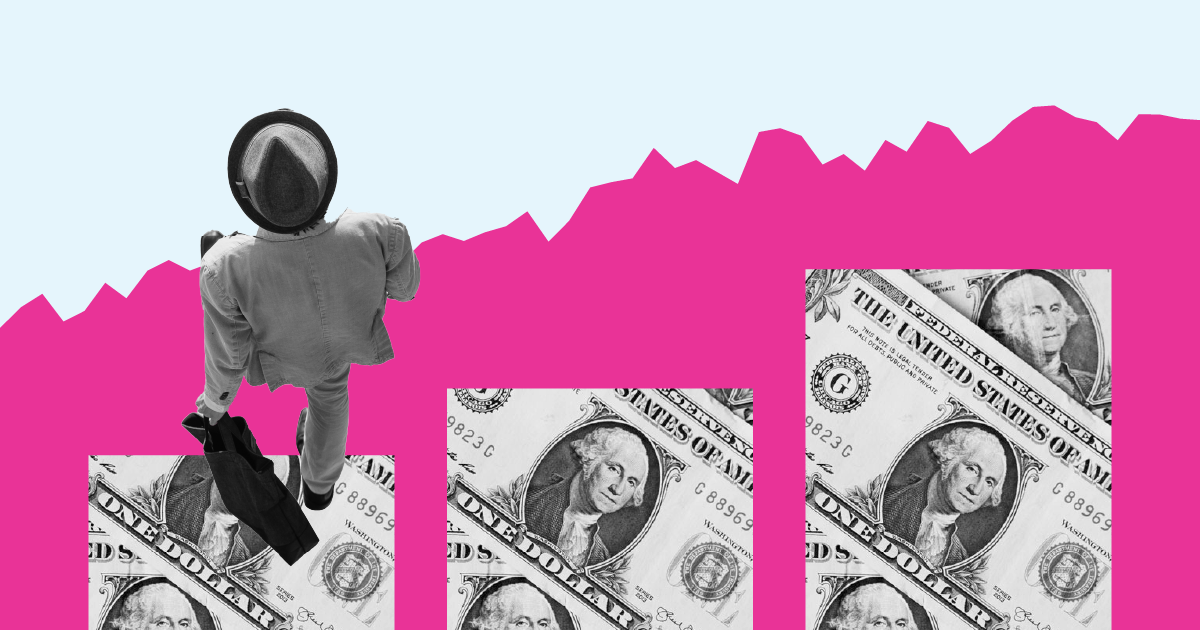Economy
What is inflation and how is it measured?

Inflation rose 9.1% this June from last June, the biggest increase in 40 years. To combat inflation’s rise, the Federal Reserve raised interest rates three times this year. Raising interest rates combats inflation in a few ways. One way is by reducing the money supply in the economy.
But what is money supply? And how can it potentially lower inflation?
Broadly, the money supply is the total amount of money circulating through the economy. For example, cash, coins, and bank accounts are all part of the country’s money supply.
The Federal Reserve defines it more specifically as a group of safe assets that households and businesses can use to make payments or to hold as short-term investments.
Economists commonly use two measures for the money supply, known as M1 and M2. M1 includes very liquid assets, such as cash and checking deposits[1][2]. M2 is broader[3]. It also includes savings deposits, money market securities, and other assets. The main distinction between M1 and M2 is how easy it is to access and use these assets. While M2 assets can easily be converted into cash, it takes a bit more effort than items included in M1.
The Federal Reserve can control the money supply through something called quantitative easing. Quantitative easing is the process of buying and selling of assets backed by the Treasury Department. The assets are owned by US banks, such as bonds or other securities. When the Fed buys assets, it adds money to the economy by freeing up banks to make more loans to people or businesses. When the economy recovers and inflation rises, the Federal Reserve can then sell those assets, reducing the money supply in the economy. The expectation is this will reduce inflation.
Federal Reserve assets hit an all-time high in April 2022. As of June 2022, Federal Reserve assets had decreased by 0.3%. In a June press release, the Fed states that it is committed to reducing its holdings of Treasury securities.
The Fed also affects the money supply by setting the federal funds rate. This is the benchmark interest rate that banks charge each other when lending their money held at the Federal Reserve. The market sets the individual rates for each transaction, but it uses the federal funds rate as a starting point.
When the Fed increases this rate, it makes it more expensive for banks to borrow from each other. Banks then pass on the costs to consumers by increasing their interest rates. When it is more expensive to get a loan, fewer loans are taken out, taking money out of the economy. If the Fed decreases the rate, the opposite happens. It becomes cheaper to lend money. When loans are cheaper, more loans go out and more money goes into the economy.
To address current inflation, the Fed raised the target range for the federal funds rate from 1.5% to 1.75% in June and anticipates that ongoing increases in the target range will be appropriate. During the pandemic, it was at 0.00% to 0.25%.
The money supply, according to M2, has grown an average of 7.7% a year since 2008 because of rapid growth in bank reserves and currency controlled by the Federal Reserve. This is slightly higher than the average yearly change of 7% from 1959 to 2007. Monetary policy responses to the pandemic also caused higher-than-average yearly increases in M2. From 2019 to 2020, M2 increased by 19%, followed by an increase of 16% the following year.
An increase in the money supply coupled with a strained economy, such as a supply chain crisis, can lead to increases in inflation. When money in circulation grows faster than goods produced in the economy, high levels of inflation can occur.
In the case of the COVID-19 pandemic, the Federal Reserve increased the money supply to combat unemployment and promote economic growth. These policies have the potential to increase prices.
Learn more from USAFacts and get the data directly in your inbox by signing up for our newsletter.
M1 consists of (1) currency outside the U.S. Treasury, Federal Reserve Banks, and the vaults of depository institutions; (2) demand deposits at commercial banks (excluding those amounts held by depository institutions, the U.S. government, and foreign banks and official institutions) less cash items in the process of collection and Federal Reserve float; and (3) other liquid deposits, consisting of other checkable deposits and savings deposits.
Liquidity is a measure of the cash and other assets individuals have available to quickly pay bills and meet short-term financial obligations.
M2 consists of M1 plus (1) small-denomination time deposits (time deposits in amounts of less than $100,000) less individual retirement account (IRA) and Keogh balances at depository institutions; and (2) balances in retail money market funds (MMFs) less IRA and Keogh balances at MMFs.
Newsletter
Keep up with the latest data and most popular content.